How We Do It: AAC Videos for Core Word Learning
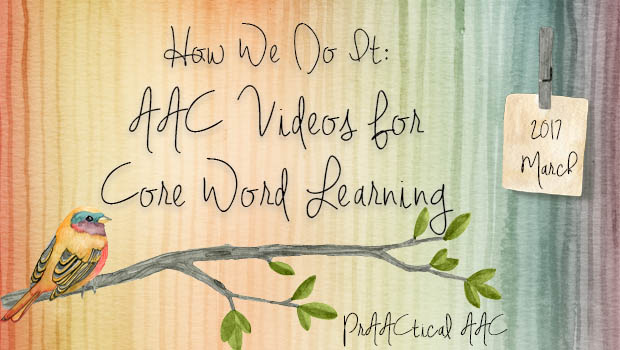
Have you ever thought of making short videos to illustrate the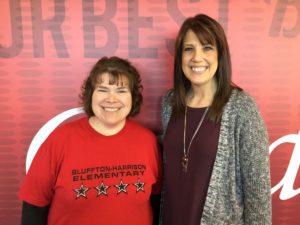 meaning of the core words you are teaching to your AAC learners? If so, this post is right up your alley. Teacher Angie Sheets and SLP Nicole Wingate have teamed up to bring the power of video to core vocabulary instruction and are here to share the fruits of their labor.
meaning of the core words you are teaching to your AAC learners? If so, this post is right up your alley. Teacher Angie Sheets and SLP Nicole Wingate have teamed up to bring the power of video to core vocabulary instruction and are here to share the fruits of their labor.
For the past 17 years, Angie has been teaching Intense Interventions to students from kindergarten through grade 4 at Bluffton Harrison Elementary School. Her AAC experiences range from “DIY on the fly” (anything that can be made in a classroom at little to no cost and meets an immediate need) to high tech. (You can follow her on Twitter @asheetsroom14).
Nicole also works for the Bluffton Harrison school system, servicing pre-k through 12th grade students. Her AAC experience includes no tech (e.g., picture boards, PECS), low tech (e.g., single switches, Go-Talk) to high tech (e.g., LAMP Words for Life and various communication apps). (You can follow her on Twitter @NWingateSLP.)
So far, Angie and Nicole have created over 20 core word videos for their students to watch. In this post, they share their story and their wonderful videos.
A little over a year ago, we attended our State conference for assistive technology. Being newbies to AAC, we were like sponges soaking in all of the amazing info at each presentation. We repeatedly heard the importance of core vocabulary. While we spent years labeling nouns, we now had a new understanding of the importance of focusing on core words. As we started to shift our thinking, we began targeting a core word of the week. We began with general engagement activities that encouraged the usage of the targeted word. The students and staff were all very receptive. As our understanding of the functionality grew, it became imperative to us to make certain that our students had command over basic core vocabulary. We began to brainstorm other ideas as to how to supplement our current vocabulary instruction. We turned to our knowledge and usage of evidence-based practices which led us to creating our own word of the week videos.
We had successfully utilized video modeling for social and behavioral purposes and decided that it may also be a helpful tool for teaching vocabulary.
The National Professional Development Center on Autism Spectrum Disorders released a 2010 briefing adding Video Modeling as an Evidence Based Practice offering the following guidelines. We were 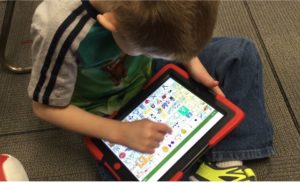 able to use those same guidelines to apply to vocabulary instruction.
able to use those same guidelines to apply to vocabulary instruction.
- Target a behavior for teaching: Using our curriculum maps, we planned a target core word for each week of instruction. We shared this calendar-like document with gen ed teachers, paraprofessionals, and related services staff in hopes to inspire everyone to jump on this initiative with us.
- Have the correct equipment: Fortunately, we are in a district that has a 1:1 technology initiative so all students and teachers have iPads.
- Plan for the video recording: This is a simple brainstorming session where we try to come up with as many ideas and possible scenarios where students will be able to see and hear the target word used in a variety of ways, in a variety of environments, and with a variety of people.
- Collect Baseline data: We use Google Forms to assist with data collection. All of our staff is continuously collecting data on IEP goals.
- Make the video: This pretty much happens on the fly. We casually decide who is making the video for the week and toss around a few ideas. Whoever is responsible just gets it done whenever time allows (seriously only takes 15 minutes).
We also try to include multiple individuals within our school building as well as individuals using AAC and/or verbal speech.
- Arrange the environment for watching the video: The first airing of our “Word of the Week” video is always during a push in session with our SLP and SLPAs. This a large group premiere event! This is a time to instruct all staff on the word of the week, how to locate the vocabulary on devices, and collect specific data.
- Show the video: I project the video on my classroom Smartboard, and all of my students LOVE this! They love seeing themselves, their peers, their teachers, their school. While watching, I pause the video multiple times in order to prompt the students utilize the desired vocabulary word. After every single viewing of a word of the week video, students always ask to see more. We have witnessed so much spontaneous speech during this time – simply amazing!
- Monitor progress: For progress monitoring, we go back to our trusty Google Forms. To help make this process a little easier, each student has a QR code that links to his or her specific Google Form.
- Troubleshoot if a learner is not making progress: One of the great things about core vocabulary is that once you know which words to target, it is super easy to include that emphasis throughout daily lessons and interactions.
- Fade the video and prompting – I show the video at least once a day (sometimes more frequently) for an entire week. Throughout the semester, we incorporate review weeks that may include an additional viewing of the video, vocabulary scavenger hunts, and a variety of other planned events to allow students to demonstrate proficiency in vocabulary.
With the successful implementation of our videos, we started our own YouTube Channel as an easy avenue to share our tools with our students’ families.
Feel free to check out our channel: WingsWorks
Once the success of our videos spread to our general education classrooms, peers wanted to help plan and create videos, too. Our latest videos include portions that were planned, written, videoed and produced by general education peers who want to help students who are using AAC devices and spread a better understanding of acceptance and inclusion!
Who knew that such a simple idea could have so much power?
Filed under: Featured Posts, PrAACtical Thinking
Tagged With: core vocabulary, video, video modeling
This post was written by Carole Zangari
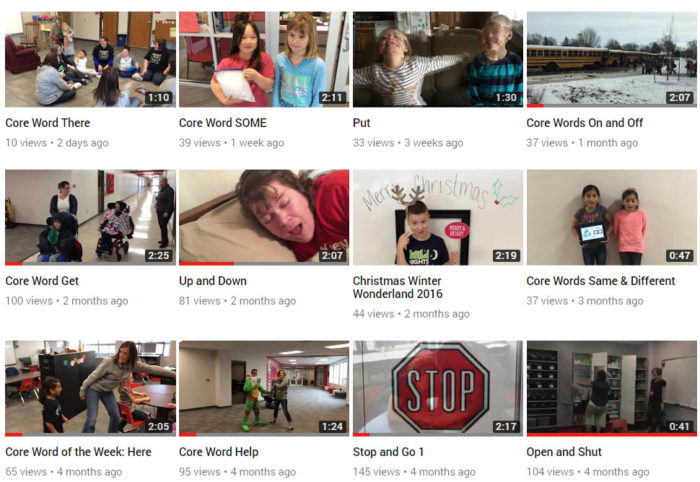

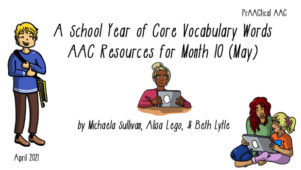
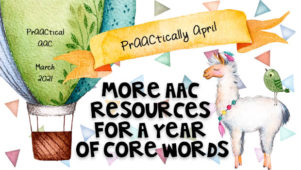
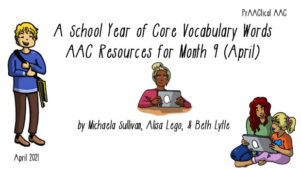
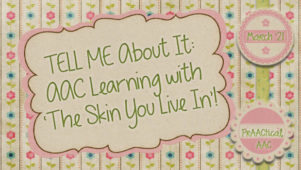
1 Comment